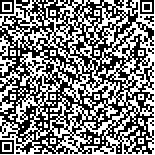张丽,张玲,陆芬,等.虚拟环境下动作观察口面肌训练治疗脑瘫流涎儿童的疗效观察[J].中华物理医学与康复杂志,2022,44(5):422-426
扫码阅读全文

|
| 虚拟环境下动作观察口面肌训练治疗脑瘫流涎儿童的疗效观察 |
|
| |
| DOI:10.3760/cma.j.issn.0254-1424.2022.05.009 |
| 中文关键词: 脑性瘫痪 流涎 虚拟现实技术 动作观察疗法 口面肌功能训练 |
| 英文关键词: Cerebral palsy Salivation Virtual reality technology Action observation therapy Oral muscle training Facial muscle training |
| 基金项目:江苏省科教强卫工程青年人才项目(QNRC2016093);江苏省妇幼保健协会科研基金(FYX202013);南京市医学科技发展资金项目(YKK18144) |
|
| 摘要点击次数: 4923 |
| 全文下载次数: 4817 |
| 中文摘要: |
| 目的 观察基于虚拟现实技术(VR)的动作观察口面肌训练对脑瘫儿童流涎的影响。 方法 采用随机数字表法将60例脑瘫伴流涎患儿分为观察组及对照组,每组30例。2组患儿均给予常规康复干预,观察组在此基础上辅以VR动作观察口面肌训练,选用HTC Vive平台营造虚拟环境,对照组则辅以常规口面肌训练(包括舌肌训练、颊唇肌训练、冰刺激、Masako吞咽训练等)。2组患儿口面肌训练均每日1次,每次30 min,每周训练5 d,共治疗3周。于干预前、干预3周后,分别采用流涎程度频率评分(DDSS)及吞咽功能评分对2组患儿流涎程度、吞咽功能进行评定;并于上述时间点检测2组患儿颊肌、口轮匝肌表面肌电均方根值(RMS)及积分肌电值(iEMG)。 结果 治疗后,对照组、观察组DDSS评分[分别为(3.19±1.21)分和(2.50±1.14)分]和吞咽功能评分[分别为(10.30±5.40)分和(8.82±4.73)分]均较治疗前明显降低(P<0.05);治疗后对照组、观察组颊肌RMS[分别为(2.81±1.91)μV和(4.16±2.01)μV]、iEMG[分别为(11.43±7.83)μV·s和(15.76±11.71)μV·s]及口轮匝肌RMS[分别为(3.33±1.73)μV和(4.58±2.60)μV]、iEMG[分别为(18.90±13.98)μV·s和(27.56±16.94)μV·s]均较治疗前有不同程度提高;通过组间比较发现,治疗后观察组患儿DDSS评分显著低于对照组水平(P<0.05),颊肌、口轮匝肌肌电RMS值及口轮匝肌iEMG值均显著高于对照组水平(P<0.05)。 结论 在常规康复干预基础上辅以VR动作观察口面肌训练,能显著改善脑瘫患儿流涎症状及吞咽功能,其疗效明显优于常规口面肌训练。 |
| 英文摘要: |
| Objective To observe the effect of oral-facial muscle training applying virtual reality technology (VR) and of action observation therapy on the salivation of children with cerebral palsy (CP). Methods Sixty CP children with uncontrolled salivation were randomly divided into a control group and an observation group, each of 30. In addition to conventional rehabilitation treatment, the control group received routine tongue muscle training, buccal lip muscle training, ice stimulation, and Masako swallowing training. The observation group received oral-facial muscle training based on action observation therapy in a virtual environment. Both groups were trained 30min per day, 5 times a week for 3 weeks. Before and after the treatment, drooling (DDSS) and swallowing function scores were evaluated. Integrated surface electromyography (iEMG) of the buccinator and orbicularis oris muscles was also performed. Results After treatment, a significant decrease was observed in the average DDSS and the swallowing function scores of both the control and observation groups, along with a significant increase in the average root mean square values of the buccinator and orbicularis oris iEMGs of both groups. However, the average DDSS score of the observation group was significantly lower than that of the control group, while the average iEMG readings were significantly better. Conclusion VR-based action observation oral-facial muscle training is a more effective supplement to conventional rehabilitation treatment than conventional oral-facial muscle training in improving the salivation of children with CP. |
|
查看全文
查看/发表评论 下载PDF阅读器 |
| 关闭 |